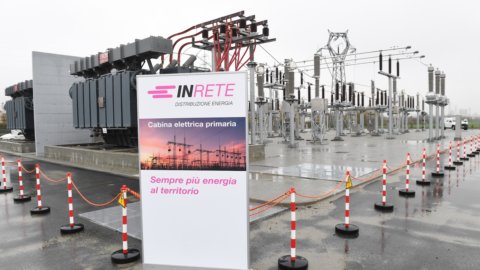La Modenese electricity grid it gets smarter. With the new primary substation, electricity distribution in Modena has increased by 18%, with the aim of covering up to 25% by 2050. Thanks to an investment of almost 7,5 million euros and a work period of around 10 years, The Hera Group has built an electricity transformation plant, from high to medium voltage, where it passes from the 132 volts of Terna's national grid to 15 volts and is then distributed to users. This is the fifth substation in Modena, designed to anticipate future needs deriving from the energy transition, in line with the provisions of the group within its Business Plan.
La new primary substation in Modena Est it is part of the development plan drawn up by the Hera group for services and infrastructure in the Modena area, with 110 million euro of investments in the four-year period 2022-2025. Of these, approximately 70% will be used to enhance and improve the services provided to local communities, while the remaining 30% will be used for their maintenance, so as to guarantee their constant efficiency.
Therefore, the first of a series that will be built by 2025, in Modena and beyond: a vast activity is underway throughout the Modena Apennine area to renew and upgrade the overhead power lines most subject to extreme weather events. A plan for the resilience of the electricity grids which will involve investments of almost 9 million euros, involving around 65 km of the infrastructure that serves the Modena mountains.
The new primary substation offers many advantages: it ensures electricity continuity for families and businesses even in the event of complete outage of one of the other four primary plants serving the city; once the works necessary for its insertion in the distribution network have been completed, it will further improve the quality of the service, decreasing the probability of disservices and, if they occur, their duration will be reduced, being equipped with cutting-edge technologies and this allows detect the "health" of the infrastructure in real time and plan any interventions.
But the investment also looks to the future, following the principle of the "smart grid": that is, being able to adapt continuously and automatically to constant stresses. One above all, the need to accept the input of energy from the grid renewables, which typically have variable and discontinuous performances and therefore require that the plants are flexible, automated and equipped with a certain degree of artificial intelligence.
A further future need concerns the efficient management of the energy communities which will develop in the area and which will be able to have a reference and exchange node for energy in their primary plants, both that produced and that withdrawn.





